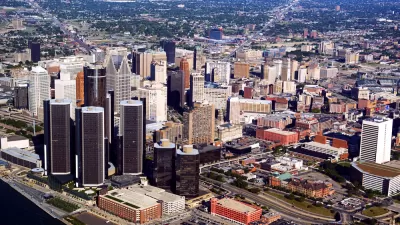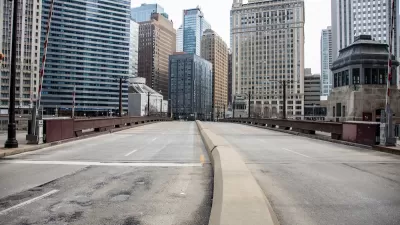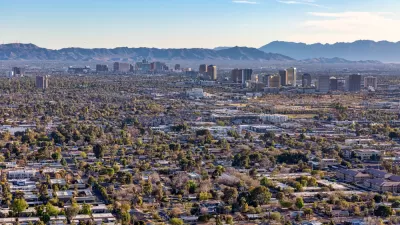Central districts have been surging back since the 1980s. But in most cities, the upper third of earners still favor outlying areas and are underrepresented closer to downtown.

In a piece for City Observatory, Daniel Hertz discusses data from a recent study on the changing demographics of American downtowns. The researchers "measured what percentage of people within three miles of their city's central business district lived in a Census tract that was in the top third. Unsurprisingly, in almost every city, that percentage increased dramatically between 1980 and 2010." The article includes a chart demonstrating that shift.
But that story, which has become accepted canon, still doesn't reflect reality for most cities. From the article: "Still, despite all the progress American central cities have made in economic development, it's important to note that most [central downtown] areas remain disproportionately poor. Even in 2010, cities where upper-income neighborhoods were underrepresented in central areas outnumbered those where upper-income neighborhoods were overrepresented by 32 to 17."
Nevertheless, the data shows a clear trend toward concentrated downtown wealth. Hertz notes how that trend depends on the young, educated demographic. "We were also struck by how much overlap there was between the Cleveland Fed's data and our findings from City Observatory's Young and Restless report late last year."
FULL STORY: More evidence on the changing demographics of American downtowns

Rethinking Redlining
For decades we have blamed 100-year-old maps for the patterns of spatial racial inequity that persist in American cities today. An esteemed researcher says: we’ve got it all wrong.

Montreal Mall to Become 6,000 Housing Units
Place Versailles will be transformed into a mixed-use complex over the next 25 years.

Planetizen Federal Action Tracker
A weekly monitor of how Trump’s orders and actions are impacting planners and planning in America.

Connecting Communities to Nature Close to Home
Los Angeles County’s Nature in Your Neighborhood program brings free, family-friendly wellness and nature activities to local parks, making it easier for residents to enjoy and connect with the outdoors.

Palmdale’s Beloved Water Park Gets $2 Million Upgrade
To mark its 20th anniversary, DryTown Water Park has undergone major renovations, ensuring that families across the Antelope Valley continue to enjoy safe, affordable, and much-needed water-based recreation in the high desert.

Help Stop the Beetle Killing Southern California’s Oak Trees
Claifornia residents can join a volunteer “blitz” this June to help detect and map infestations of an invasive beetle that is killing thousands of oak trees across Southern California.
Urban Design for Planners 1: Software Tools
This six-course series explores essential urban design concepts using open source software and equips planners with the tools they need to participate fully in the urban design process.
Planning for Universal Design
Learn the tools for implementing Universal Design in planning regulations.
Heyer Gruel & Associates PA
City of Clovis
City of Camden Redevelopment Agency
City of Astoria
Transportation Research & Education Center (TREC) at Portland State University
Regional Transportation Commission of Southern Nevada
Toledo-Lucas County Plan Commissions





























